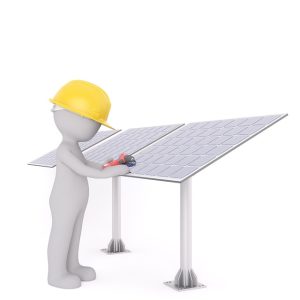Solar power is revolutionizing the global energy landscape by providing an increasingly cost-effective and scalable alternative to fossil fuels. The latest advancements in solar technology have made it feasible for deployment at all levels, from small residential rooftops to extensive solar farms. This shift towards solar energy not only supports environmental sustainability by significantly cutting greenhouse gas emissions but also contributes to meeting the world's growing energy needs without compromising the health of our planet. As nations and communities worldwide adopt solar power, it becomes clear that this renewable resource is crucial for future energy security and resilience.
- Understanding the Components of Solar Power Systems: An Overview
- – Introduction to Solar Panels, Inverters, and Battery Storage
- – The Role of Each Component in Solar Energy Systems
- 2. Routine Maintenance Best Practices for Maximizing Solar Efficiency
Understanding the Components of Solar Power Systems: An Overview

Solar power systems harness energy from the sun and convert it into electricity, making them a clean and renewable energy source. To ensure optimal performance, understanding the components that make up these systems is crucial. The core elements include solar panels, inverters, charge controllers, batteries, and mounting structures. Solar panels are the heart of the system, capturing sunlight and converting it into direct current (DC) electricity. They come in various forms, such as monocrystalline, polycrystalline, and thin-film solar cells, each with its own efficiency characteristics and cost considerations. Inverters are responsible for transforming the DC power produced by the panels into alternating current (AC), which is the standard electrical supply format used by most homes and businesses. Charge controllers manage the flow of electricity between the solar panels and the batteries, ensuring that the batteries are charged optimally without being overcharged or discharged. Batteries store the energy harnessed for use when sunlight is not available, like during the night or on cloudy days. Properly selected and maintained batteries play a pivotal role in the longevity and effectiveness of the entire solar power system. Lastly, mounting structures securely hold the panels in position to maximize their exposure to sunlight throughout the day. Regular inspection and maintenance of these components are essential for maintaining peak performance and ensuring that your solar power system operates efficiently over its lifetime. Understanding each component’s function within the system allows for informed maintenance decisions, which can enhance energy production and contribute to cost savings in the long run.
– Introduction to Solar Panels, Inverters, and Battery Storage

– The Role of Each Component in Solar Energy Systems

2. Routine Maintenance Best Practices for Maximizing Solar Efficiency

